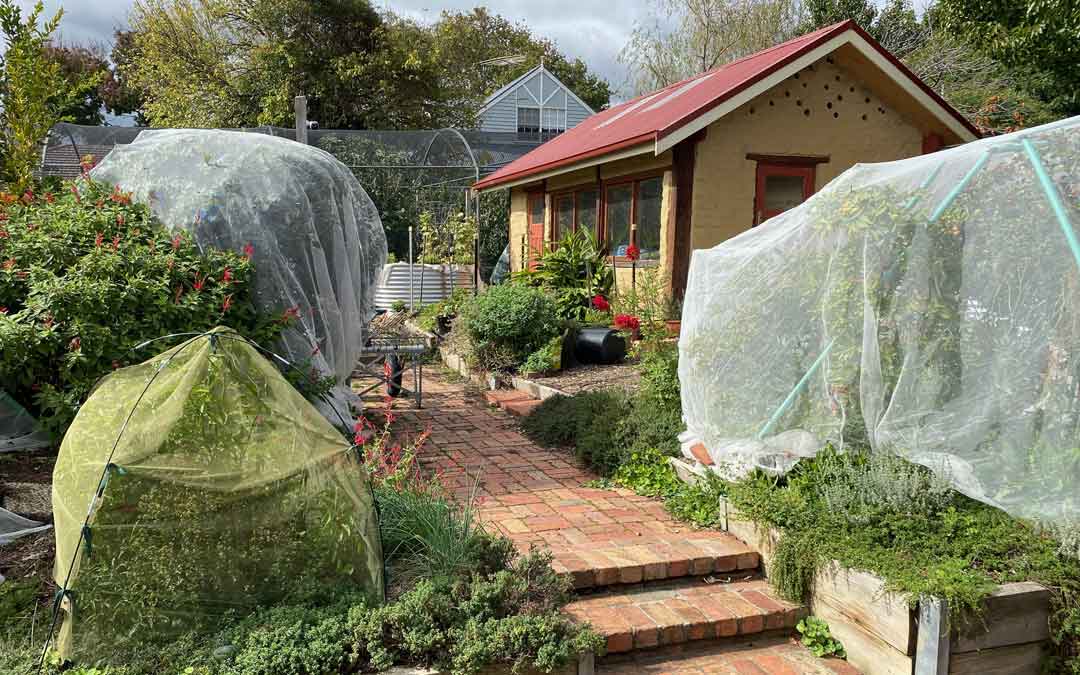Lose the lawn – ditch mowing forever

How natural is your nature strip? What role does your lawn play in reducing carbon in the atmosphere – the CO2 that wreaks havoc with the climate?
Lawns and tidy nature strips can look attractive and appear part of the natural world, but what is the reality?
Given a haircut every Sunday, nature strips and lawns are the manicured poodles of the plant world. A well-tended lawn or nature strip is a source of pride, a testament to our ability to control nature.
Lawns and nature strips are the sole reason most of us start the mower each week. And let’s not forget the whipper snipper and leaf blower, all of them adding to the weekend chorus of machinery and local air pollution and ultimately the warming of the planet (see previous article: The Humble Lawnmower).
Certainly, green lawns and nature strips make a greater contribution to reducing carbon in the atmosphere than concrete and paving, but is it the best we can do?
Storing carbon in plants is one strategy to combat global warming. According to a past Australian Chief Scientist, native forests are typically over 10 times more effective than grasslands in storing carbon.
Carbon is stored by plants in trees, grasses and in the soil itself. Plants draw carbon dioxide (along with water and sunlight) from the atmosphere, releasing oxygen, sugars and water. They use CO2 to build their structures, including the root system.
Trees store far more carbon above and below ground than grasses. To put this in perspective, grasslands store 25 tonnes of carbon per hectare, versus 30 to 70 tonnes stored by forests.
Grasses also quickly release stored carbon when we mow them. Trees hold carbon for significantly longer.
Swapping the lawn for plants that will capture more carbon also gives the opportunity to grow more of our own food. Many of us grow fruit and vegies around the back, but how about expanding our agricultural efforts to the front yard?
Food production and transport are a significant contributor to global warming through the use of fossil fuel machinery, the production and use of fertilisers, and the failure of most agricultural systems to store carbon in the soil. Growing our own food is one way of reducing our dependence on large-scale agriculture and lowering the carbon released into the atmosphere. If we need any further incentive, the cost of living crisis makes growing our own vegies and fruit doubly attractive.
So, if we swap our lawns (and perhaps nature strips), for trees and shrubs, rather than lawns, we will store more carbon, add to biodiversity and avoid polluting the local air with petrol-driven mowers.
Useful Articles
Australia’s Chief Scientist – Which plants store more carbon in Australia: forests or grasses?
Helen Tuton – SGA Online – Nature Strip and Road Verge Plantings
Ryan Borrett – Carbon Neutral – Carbon jargon: How trees capture and store carbon
